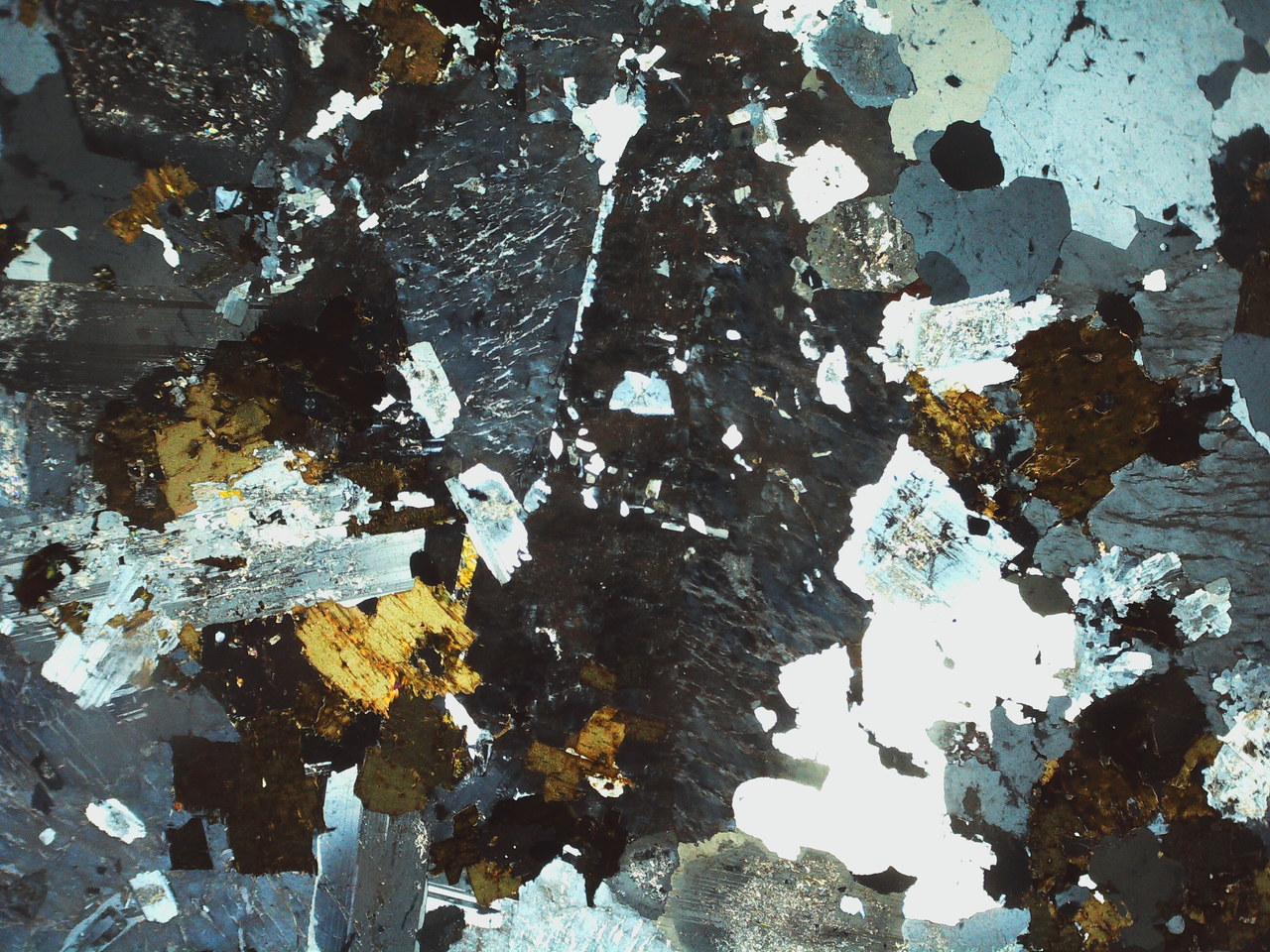
|
Garnet andesite at Nijosan.
Always black interference color particle in XPL is garnet.
Yellow pillar like minerals is biotite and shows straight
extinction. Plagioclase shows parallel twin or zonal structure.
Quartz does not show any twin texture. Ground-mass may be glassy,
because of their dark color.
|

|
| Basalt at Genbudo. Colorful euhedral
phenocryst is olivine. Its rim is altered. The ground mass is buried
with pillar plagioclase and small olivine and clino-pyroxene. from http://www.h-hagiya.com/ouj/tsec0708.htm
|

|
Basalt at Miyakejima. Large
gray colored phenocryst is plagioclase. It shows twin propety. A purple
but partly stripped at left is olivine. Many plagioclases compose ground
mass.
|

|
Red basalt in Deccan plateau. A
cavity is buried by a large secondary crystallized mineral, It may be
zeolite. Ground mass is composed of lath-shaped plagioclases and
clino-pyroxenes. A typical flood basalt texture.
|

|
Dolerite at Campinas Brazil. Beautiful texture; colorful is pyroxene. gray is plagioclase.
|

|
Kimberlite at Premium mine South
Africa. Large crystal was born as olivine, but now completely altered to
serpentine. It is famous as a mother rock of diamonds. It is caused by a
huge high speed eruption or intrusion of more than 100km/h from deep
mantle to the surface. Only old craton has such unique volcanic rock.
|

|
Pink granite unknown region.
Granite usually compose of quartz, K-felsper, plagioclase and biotite.
This rock has large K-felspers and their color is pink. Also K-felsper
shows perthite or zonal structures. Central dark K-felspers show a
typical perthite structure.
|

|
Diorite at Anougawa Mie Pref. Most
of the colored minerals are hornblend. And gray are plagioclase showing
beautiful albite twin.
|

|
Larvikite unknown origin.
Coiorful Minerals may be titan augite and olivine including biotites as
corona texture. Others are alkaii felspar and nepheline?
Information from
http://www.northern-england-geology.co.uk/pages/page133-Larvikite.htm
|

|
Gabrro at Samani Hokkaido. Colored
crystals are olivines which are partly serpentized Center right dark
gray particle with parallel cleavages is pyroxene. Others are
plagioclase..
|

|
Pyroxenite at Dwars river mine South
Africa. Most of the view is occupied colorful pyroxenes. Some have very
beautiful cleavages and some have lamella structure..
|

|
Lherzorite at Horoman Hokkaido.
Horoman is one of the famous peridotite complex location around the
world. This sample contain .some symplectite viens. They are derived from garnet-pyroxene rocks beneath Moho.
|

|
Scale: width 13.5mm minimum scale = 0.5mm
|

























